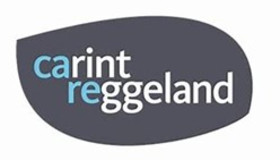PDEng-candidate Jillis Kors MSc (Saxion UAS), co-promotor dr. ing. Jan Veuger MRE FRICS (Saxion UAS) and promotor Prof.dr.ir. Petra C. de Weerd-Nederhof (University of Twente)
Project description
Rationale - Despite the potential benefits, no large-scale Blockchain applications have been developed to date for citizen-centric healthcare chains. The application of Blockchain raises operational, political and strategic issues. There is a need for business cases that can explore the added value of Blockchain in healthcare chains, what conditions should apply and what regular governance this should lead to for SMEs that have to comply with laws and regulations, protection of public values and risk management.
Problem - In the care chain of this project, thirty intramural locations do their own stock management (resources such as beds, mattresses, patient elevators, post chairs, bladder scans, etc., which are supplied to clients, authorities and other care chain partners in the context of WMO indications). The locations do not know what each other's stocks are. As a result, there is no overview of purchases, use, maintenance or movements. As a result, the care chain cannot function properly. The expectation is that with a Blockchain platform inventories can be managed more effectively and efficiently.
Program of requirements for a closed blockchain platform - (1) common infrastructure for
collaborations and chains, (2) scalability is high (among other things speed and volume), (3) privacy is well secured (among other things access and removability), (4) agreements with the supplier fit best within existing legal agreements, (5) governance: high controllability of software and access rights, (6) read and write costs are predictable and low, (7) functionality for decentralised/distributed management of assets, (8) always up-to-date overview of the total of managed assets, (9) inspection and maintenance status of each asset is easy to retrieve, (10) forecasts can be made regarding required investments and depreciation based on maintenance history and inspection, (11) source of invoicing and validation of invoicing.
Research method - The method for conducting research is a design-oriented method along the lines of the Design Thinking method. In order to measure the social added value of the blockchain platform, a Social Return On Investment (SROI) analysis is performed (ex-ante and ex-post).
Intended design result - Closed Blockchain platform. In contrast to public versions of blockchain, with the closed version only a closed group of parties can read and record data on the platform. Results from the Blockchain platform are expected to be: (6) read and write costs are predictable and low, (7) functionality for decentralised/distributed management of resources, (8) always up-to-date overview of the total of managed resources, (9) inspection and maintenance status of each resource is easy to retrieve, (10) forecasts can be made regarding necessary investments and depreciation based on maintenance history and inspection, (11) source of invoicing and of validation of the invoicing (numbering corresponds to the programme of requirements).
